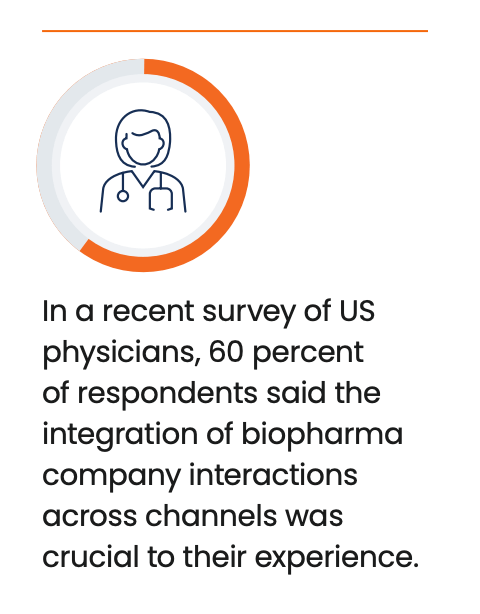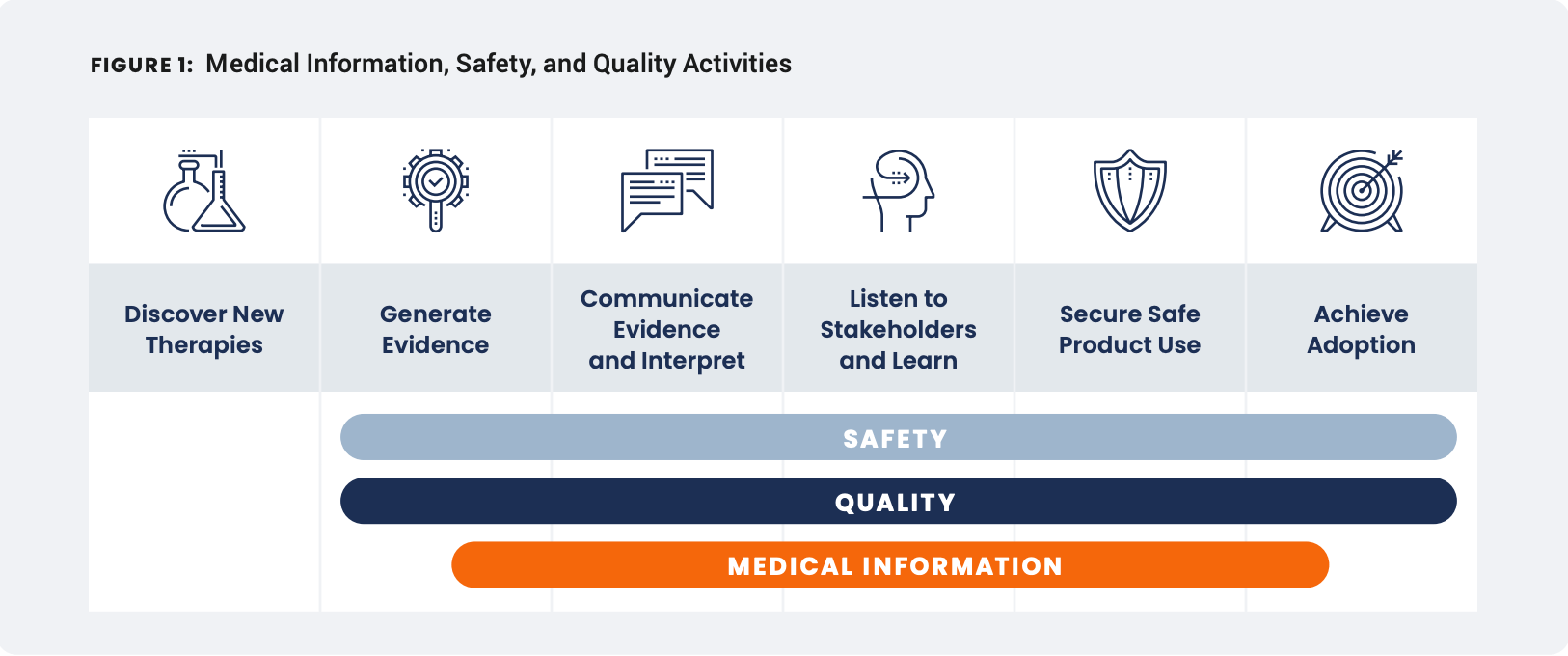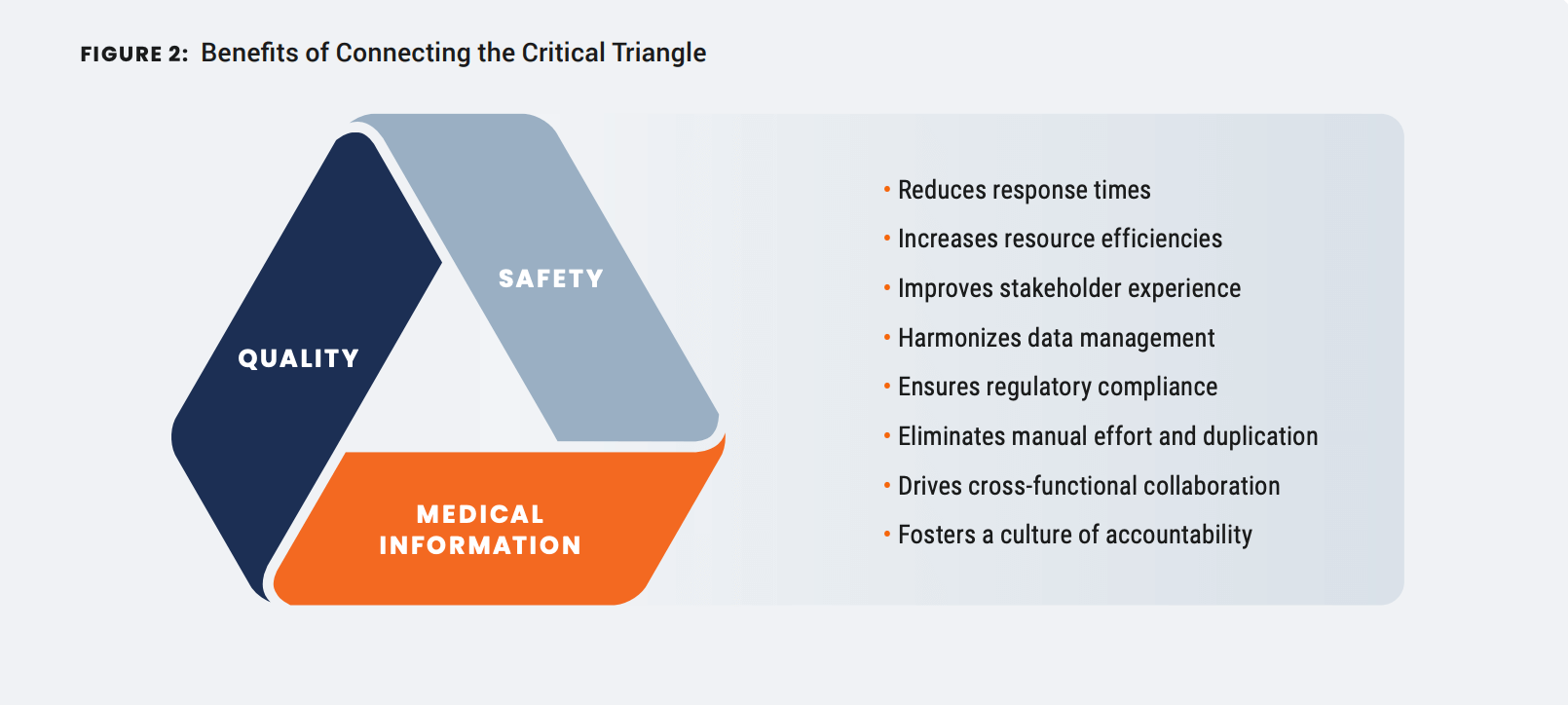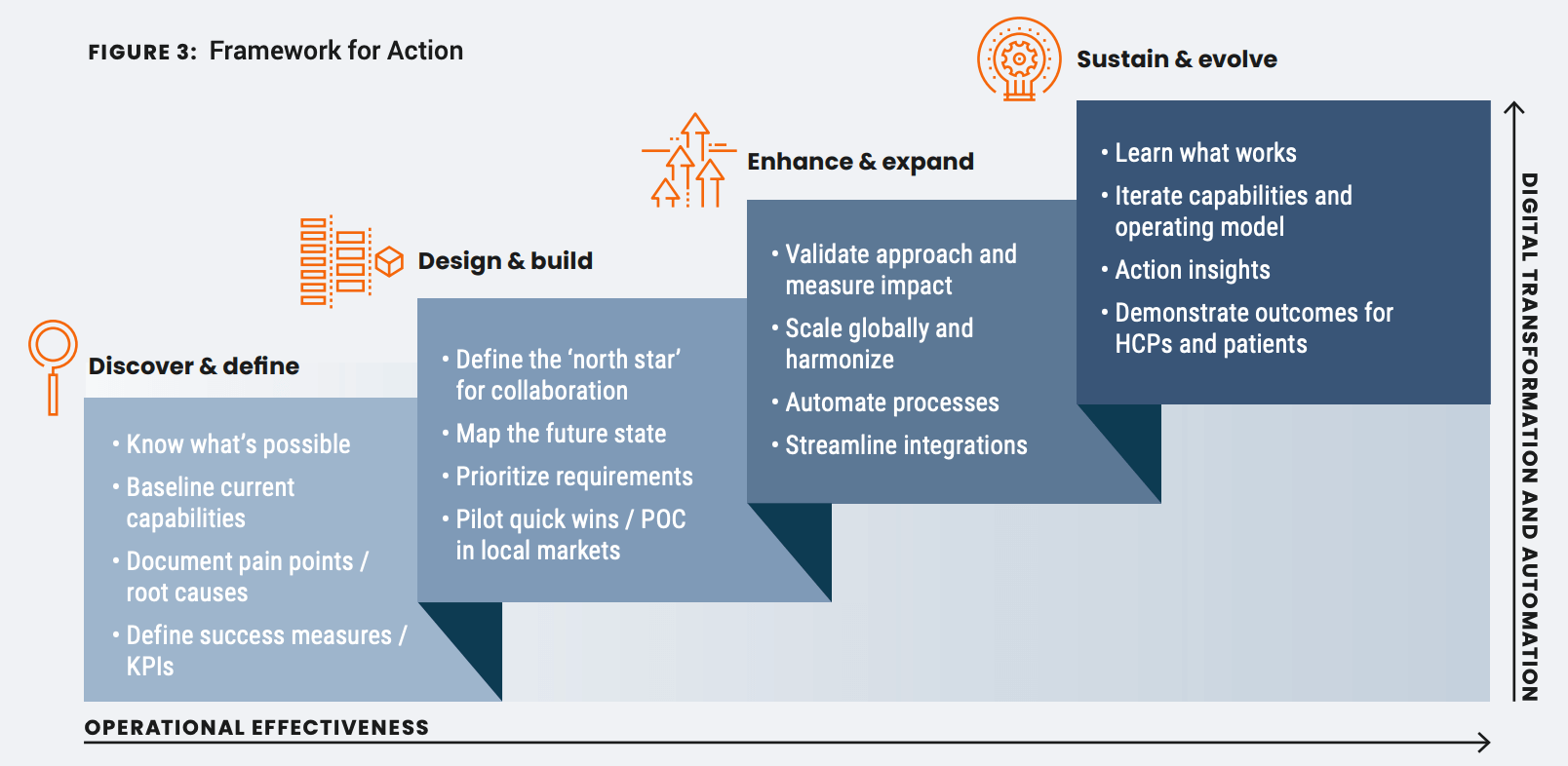Modern drug innovation has changed the treatment paradigm. Increasingly
challenged to stay current on the latest developments and scientific literature,
healthcare providers (HCPs) are demanding deeper scientific exchange to support
their clinical decision-making. They’ve come to rely more heavily on medical
information as a trusted source of product education and primary touchpoint for
reporting potential adverse events (AEs) and product quality complaints (PQCs).
Biopharma companies have sought to create more internal synergies between
medical information, safety, and quality teams, but existing frameworks have
fallen short of overcoming the high degree of manual effort required to transfer
and reconcile data compliantly.
We recently sat down with a global medical operations lead at a top ten biopharma
company to discuss how his team overcame institutional challenges to connect
this critical triangle and how organizations can get started driving transformation
of their own.

The impetus for transformation
In a recent survey of US physicians, 60 percent of respondents said the integration
of biopharma company interactions across channels was crucial to their experience.
Companies are adapting their engagement models to meet these evolving
preferences across a wider mix of channels. To do this effectively requires
orchestration behind the scenes. For this company, an area ripe for improvement
was at the intersection of medical information, safety, and quality.
The executive explains, “Our company cares about efficiency, productivity,
and driving commonality across the enterprise. It’s not as flashy but the results
are tangible both in time and potentially money saved down the road.
The intersection of medical information, safety, and quality
Organizations typically have procedures that define the compliant way to collect,
process, and report AEs and PQCs. However, lack of clarity on the processes shared
between teams creates confusion around who owns what.

When data and technology platforms are disconnected across functions, the time
spent reconciling these tasks is critical time lost, not just for HCPs and patients but
for teams managing high case volumes across products and geographies.
The flip side of that coin is compliance. Siloed execution carries serious risks. As the
executive points out, “If we make a mistake in any of these realms, it’s significant.
It can have regulatory implications. That manual effort is fraught with risk.”
The opportunity to simplify and streamline processes across teams is clear but
new advancements in connected technology solutions are providing organizations
the means to act.
Breaking down the silos
On a path to replace their medical information intake system with Veeva Vault
MedInquiry, the global company saw a larger opportunity to establish an intake
model in partnership with safety and quality. As the executive puts it, “When we’re
talking multinational, multi-therapeutic areas, complexity of country, region,
different time zones – having a standard intake model just makes sense.”
The company took advantage of Veeva’s native connectivity across products to
build a new coordinated approach between teams. Creating this alignment upfront
has numerous downstream benefits. “It’s adhering to our same policy standards,
but it’s more efficient,” the executive explains. “It’s keeping our external HCPs in
mind as it pertains to the crosstalk that has to happen in reconciliation.”
Leveraging Vault Connections, the company has been able to:
- Standardize cross-team processes across different Vaults
- Harmonize data management driving commonality between functions
- Automate manual work without the burden of integration and maintenance
- Mitigate risk by providing full traceability from one system to another
- Simplify the IT landscape by sharing a single core platform and common
release cycle

Three pillars of unification
Here’s how to think about your foundational components when looking to unify
medical information, safety, and quality:
Baseline current capabilities
Evaluate existing capabilities from intake and triage to reporting and reconciliation.
What are the strengths and weaknesses? Document current pain points and their
root causes and then identify the areas needing improvement, whether that includes
gaps to be filled, or inefficiencies that can be addressed through automation.
Define the north star for collaboration
This is your destination. If there is an opportunity for stronger connection across
functions, define why this is important and what you are trying to achieve. Your
north star should clearly articulate the case for action, detailing why addressing this
opportunity is crucial for the business and outlining the potential risks of inaction.
Map the future state
Identify your target capabilities and design the roadmap to meet them. Teams
should collectively agree on desired outcomes at each level, with clearly defined
accountabilities and success measures. Consider this multi-phase framework
for action.

Remember, transformation is an ongoing process. It doesn’t have to be the full
suite of capabilities from day one. You can be practical about these improvements
occurring over time, finding pockets of value along the way.
To learn more about improving collaboration between medical information, safety, and quality, get in touch with Veeva Business Consulting.
AUTHORS
Allie Reynolds
Senior Director, Vault Medical Strategy
Danielle Pagnan
Engagement Manager, Medical Business Consulting
danielle.pagnan@veeva.com
Mary Verdin Alcazar
Principal Business Consultant, R&D
Mary.alcazar@veeva.com
